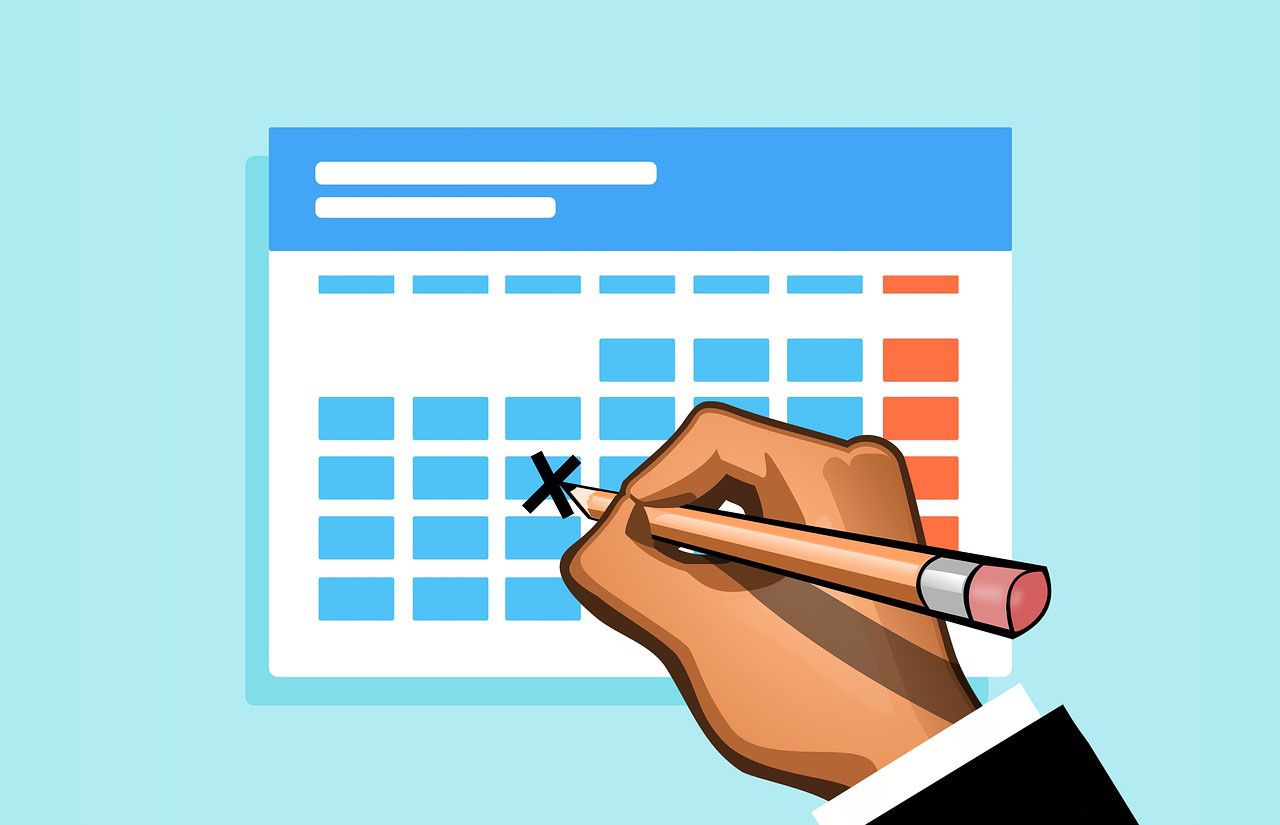How To Do a No Spend Challenge and Save $$$

Whether you’re having trouble paying bills, are preparing for a potential recession, or simply want to challenge yourself to save more money at home, creating a No Spend Challenge could be just what you need to get your finances on track. Try a short week-long challenge to ease into making over your spending habits, or put yourself on a spending freeze with a 30-day No Spend Challenge.
How To Do a No Spend Challenge
- Find Your “Why”
- Set a Goal for Unspent Money
- Plan the Timing
- Determine the Length of Time
- Decide Spending Rules
- Create a Strategy
- Recruit a Buddy
- Find Freebies
- Push Past Setbacks
- Reevaluate and Readjust
If you find it difficult to save money, you’re not alone. Many Americans don’t earn enough money to have extra to tuck into their savings account or retirement plan. Living paycheck to paycheck makes it nearly impossible to pay bills comfortably, let alone have an emergency plan. A No Spend Month Challenge may be helpful to identify non-essential spending or impulse spending to give you more money to put toward credit card debt or your savings account.
A No Spend Challenge might be the answer to gaining more financial freedom. However, you can try a No Spend Challenge at any time, for as short or long as you’d like, to help you meet your financial goals.
What Is a No Spend Challenge?
Just like it sounds, a No Spend Challenge challenges you to stop spending money for a specific period of time. These challenges can last however long you’d like them to. Some people start by cutting spending for a couple of days, while others up the ante by creating a no spend month.
During a No Spend Challenge, you don’t have to stop spending money entirely. Instead, these challenges encourage you to not spend money on frivolous items.
Although you’ll avoid impulse purchase shopping and other unhealthy spending habits, you’ll still be able to pay for necessities, like bills and groceries, during your challenge period.
Why Do a No Spend Challenge?
There are several benefits related to a No Spend Challenge. Here are some of the top reasons to participate in a No Spend Month Challenge:
- You want to put more money toward paying debt, like student loans or credit card debt.
- You want to put more money into your savings account.
- You want to change their negative spending habits to learn more positive ways to use your money.
- You want to reach a specific financial goal, such as starting a retirement account, buying a car, or saving for a vacation.
Basically, a No Spend Challenge can be for whatever financial goal you’d like it to be. These challenges are ideal for anyone who wants to decrease their spending for any reason, whether it’s just for a week, a month, or longer. It can be an excellent way to get out of debt or learn healthy money management skills.
How To Do a No Spend Challenge
Whether you want to improve your investment strategy, put extra money you save into savings, or use what you’ve learned during a no spend challenge to make a personal budget for your family, temporarily pausing unnecessary spending can help you reach your goals.
Follow these steps to create your own No Spend Challenge.
1. Find Your “Why”
A No Spend Challenge will only be as successful as your drive to do it. Before you begin, nail down your reason for starting the challenge. Is it because you want to challenge yourself to save more money? Are you trying to pay debt fast? Or, do you just want to see how a week or month can look with extra money in your pocket?
Whatever the reason, use it as motivation as you create your money challenge. Your reason will also help you shape your specific challenge. For example, if you want your extra money to go toward a new vehicle purchase, you might have a full-month challenge to see if you can save enough money for your first month’s payment.
2. Set a Goal for Unspent Money
Where will the money you don’t spend go after your challenge is over? Plan this before starting so you have a clear goal for your extra money. You might choose to move any extra money you have after paying for necessities to a savings account immediately to reduce temptation.
Consider creating a No Spend Challenge printable with your goal listed at the top. Below that, chart how you’ll use your extra money. Hang your printable somewhere where you’ll see it daily as a visual reminder of your goal.
3. Plan the Timing

Be mindful of when you start your No Spend Challenge. A No Spend Challenge can fail easily if it’s started during months when spending might be higher than usual, such as around the holidays or during the summer when many people vacation. Think about your specific schedule to determine what weeks or months might be easier to plan your challenge.
For example, some areas charge customers quarterly for their water bills. The four months of the year when that utility bill is due can make spending restrictions more difficult for some individuals and families. Look at your past bank statements to see if there are any trends with your bills that could make some months difficult for saving money during a No Spend Challenge.
4. Determine the Length of Time
As mentioned, a No Spend Challenge can translate to a No Spend Month, No Spend Week, or even a No Spend Day, if you choose. Some people like to test out a challenge for a day or two to see if they can cut unnecessary expenses or bad spending habits short-term before transitioning to a longer challenge.
Choose what works for you and what will help you work toward your goals the best. If you feel that you need to take baby steps to get to an entire month of no spending, do a one or two-day challenge instead. A week-long challenge can be an excellent starting point for beginners.
5. Decide Spending Rules
Your challenge should cater to your financial goals. Because it’s your No Spend Challenge, you decide your No Spend Challenge rules. If you’re starting your very first challenge, try not to be too restrictive, as cutting out everything at once can reduce your chances of success. Instead, choose a few rules to focus on that you feel are doable.
Get specific with them. What, specifically, can you do to make your No Spend Challenge more successful? For example, you might vow not to shop online for the month or make more meals at home rather than ordering fast food.
6. Create a Strategy
While you don’t need a financial advisor to help you complete a No Spend Challenge, you should create a strategy that can increase the likelihood that you have a successful spending challenge.
During your challenge, keep track of your spending. Make note of anything especially difficult for you, like swearing off Amazon purchases or not buying coffee on the way to work. These are the target areas you’ll want to focus on. Perhaps, ruling these spending habits out of your life for even longer than your challenge could help you realize how much you don’t need them.
Also, be sure to celebrate your wins, no matter how small. Every time you pass up a food delivery in favor of cooking dinner in your kitchen, for example, is something you deserve a pat on the back for.
7. Recruit a Buddy

Doing a No Spend Challenge alone is possible, but having someone do it with you might give you the motivation you need to keep going. During the challenge, you and your partner can share struggles and celebrate your wins. They can even be your No Spend Challenge guide if you get stuck and need advice about sticking to your goals.
8. Find Freebies
One of the best things about a personal finance challenge like a No Spend Challenge is that it forces you to get creative about how to get what you need without overspending. Becoming more frugal by utilizing resources like discounts and freebies is often a positive side effect of learning better spending habits.
Use freebie websites and email newsletters as much as possible. They can help you find free entertainment, discounted groceries and toiletries, and other money-saving items. For example, browse Craigslist to find free items in your local area, contact publishers for free magazines, or join free sample websites.
9. Push Past Setbacks

Setbacks are inevitable during a No Spend Challenge, especially if you’re new to participating in one. Avoiding spending money on unnecessary purchases is a whole new experience for many, so it may feel very unnatural for a while. This is completely normal, so don’t feel as though you’re failing your money challenge if you’re having a tough time breaking a habit or getting tempted by something you want to buy.
When problems arise, don’t use them as excuses to stop your challenge. Instead, keep moving forward while keeping in mind whatever it is you struggled with. Jot that down, so you remember it for next time. It’s simply one weak area you need to improve on, but it doesn’t need to affect your whole challenge.
10. Reevaluate and Readjust
After completing your No Spend Challenge, review everything you noted about your challenge. What were your weak areas? Where were you able to easily cut spending money? Did you end up with more or less money to save than you expected? Are you closer to reaching your financial goal?
Use information about this challenge to prepare for your next. Reevaluate what you could do differently to make your next challenge even more successful.
Making a No Spend Challenge Work for You
It’s impossible to not spend money at all, as most people have bills to pay and mouths to feed. A No Spend Challenge doesn’t require you to stop spending money completely. Instead, it helps you establish good spending habits with a temporary spending freeze for impulse purchases and unnecessary expenses. As you move through your challenge, you’ll get creative to bypass the fact that you’re spending less money.
A No Spend Challenge can be as short or long as you need to help you reach your financial goal or goals faster. The extra money you have after saving throughout the challenge can go toward credit card debt, a vacation, house repairs, retirement, or any other financial goal that fits your current lifestyle needs.
Consider having one or several people join you in your challenge for extra motivation and encouragement. You might even have a prize at the end to entice all participants to reach their goals. And, no matter what No Spend Challenge rules you have in place, remember to make your challenge fun and meaningful.